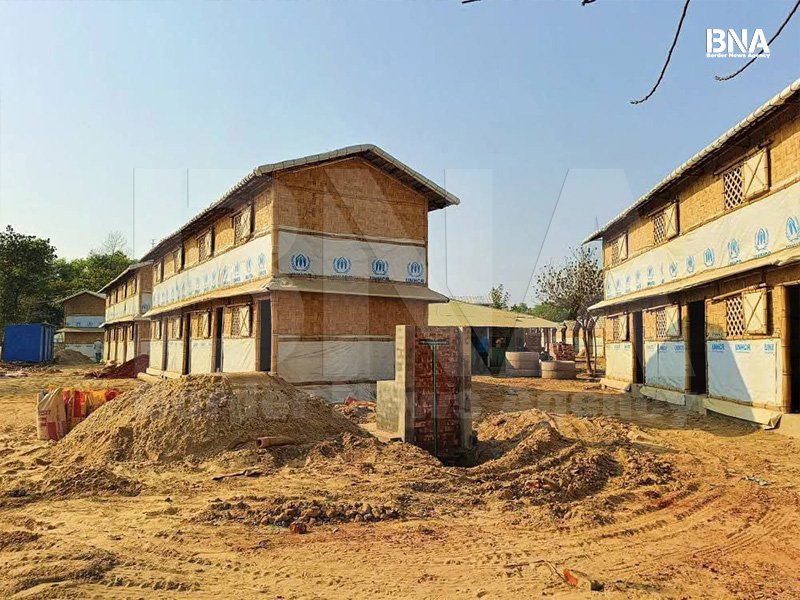Cox’s Bazar, Bangladesh Construction of new shelters is currently underway in the Camp 4 extension of the Rohingya refugee camps in Cox’s Bazar. The development has raised speculation among refugees and humanitarian workers, with many believing that these shelters are meant for newly arrived Rohingya refugees who have been seeking safety since last year.
However, no official confirmation has been given by the Bangladesh government or relevant authorities regarding the allocation of these shelters.
Since the end of last year, thousands of Rohingya refugees have arrived in Bangladesh, fleeing continued violence, persecution, and instability in Myanmar’s Rakhine State. Most of these new arrivals have faced extreme hardship, with many forced to live in makeshift shelters, overcrowded homes, or even out in the open without proper protection.
The ongoing construction of shelters in the Camp 4 extension has given them a sense of hope, but uncertainty remains.
A newly arrived refugee, who currently sleeps in a temporary hut made of plastic sheets and bamboo, expressed his concerns: “We have been living in miserable conditions, with no proper food, no proper shelter, and no hope for a better life. If these new houses are for us, it would be a great relief. But so far, no one has told us anything officially. We are just waiting, hoping for help.”
The lack of clear information has created confusion among the refugee community. Some believe the shelters will be assigned to the most vulnerable new arrivals, including women, children, and elderly people. Others worry that they might be reserved for different purposes, leaving many still without proper housing.
Local community leaders and humanitarian organizations have urged authorities to provide clear details regarding the purpose of these new shelters.
A Rohingya community leader stated: “The situation is already very difficult for new arrivals. Without official confirmation from the authorities, refugees remain anxious. If these homes are for them, they should be informed immediately so they can prepare to move in. If not, other arrangements should be made for those who are still homeless.”
In addition to the need for housing, humanitarian workers have pointed out that new shelters alone will not be enough to improve conditions for the refugees. Many new arrivals also lack access to clean water, proper sanitation, and medical care. Diseases spread quickly in overcrowded areas, and with limited healthcare facilities available in the camps, the situation is becoming more severe.
Meanwhile, long-term Rohingya refugees living in the camps have expressed mixed reactions to the construction.
Some support providing shelter to the newly arrived, as they understand the suffering they have endured. However, others worry that the increasing population in the camps will lead to more restrictions, reduced rations, and increased security concerns.
A refugee who has been living in the camp since 2017 shared his concerns: “We understand that those who came recently need shelter, but the camps are already overcrowded. If more people keep arriving, how will we survive? We already face so many difficulties, and now the situation is getting even worse.”
As construction continues, the need for clear communication and swift action from the authorities remains critical.
The newly arrived Rohingya refugees, who have already faced immense hardship and uncertainty, are waiting anxiously to see if they will finally have a safe place to live.
Without proper housing and essential support, their suffering will only continue. Humanitarian groups have urged the international community to step up assistance to ensure that these refugees receive not just shelter, but also the basic necessities required to survive and rebuild their lives.
For now, the question remains unanswered: Will these new shelters be the solution for the newly arrived Rohingya, or will they remain in limbo, waiting for relief that never comes.






